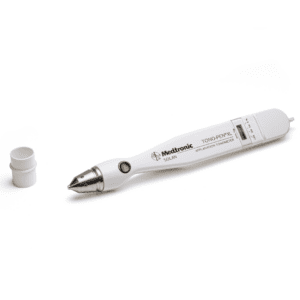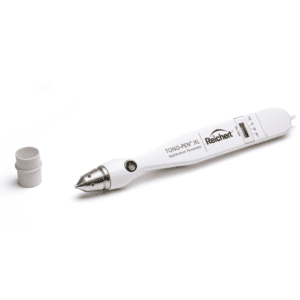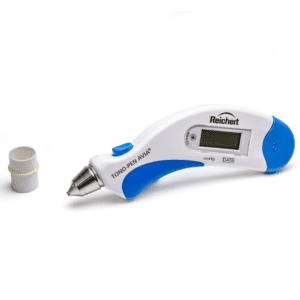Are you fascinated with the rapid advancement of technologies in the ophthalmic equipment industry? It’s exhilarating, isn’t it? Not only are these amazing tools transforming how eye care professionals conduct exams and perform surgeries, but they’re equally revolutionizing the patient experience.
From high-resolution imaging equipment to cutting-edge software applications, the field of ophthalmic equipment technology is bursting with exciting innovations. In this article, we’ll explore some of the most intriguing emerging trends that promise to change the way we diagnose eye conditions and treat our eye health.
“The tools we use to aid in eye care are not the same as they were a few years ago. They are evolving, with technology leading the way. This is not your grandfather’s eye care. This is the new age of ophthalmic equipment technology and you are participating in its evolution”.
So, whether you’re an ophthalmologist seeking to stay abreast of the latest technological developments, an optometry student avid to learn more, or simply an intrigued reader, you are in the right place. Dive with us into these applause-worthy advancements that are reshaping the world of ophthalmic technology.
As you navigate the landscape of ophthalmic technology, it’s essential to recognize the compelling advancements that are transforming this field. Improved technology and materials have led to the creation of more efficient and reliable ophthalmic equipment, both diagnosing and aiding in the management of eye diseases.
In the global market, revenue sources are rapidly shifting towards technologically advanced ophthalmic equipment. A study by MarketsandMarkets highlights this trend, suggesting important implications for industry players who are in the business of producing and marketing such equipment. For you as a healthcare provider or potential investor, this presents a budding opportunity for growth and innovation.
The last two years (2020-2022) have also seen an eruption of new product launches in the ophthalmic equipment market. These products, such as lens edgers, refractive error clips, and intraocular lenses, not only offer advanced functionalities but also promote improved ophthalmic care. They reflect a series of innovations driven by thorough research and development.
When it comes to the future of the ophthalmic equipment technology market, an analysis of recent patents paints a truly promising picture. With an uptick in domain-specific patents, it’s evident that myriad innovative products are on the horizon, ready to advance eye care to unprecedented levels.
Take the continuous development of Optical Coherence Tomography (OCT), for example. As a non-invasive imaging technique, OCT has transformed how ophthalmologists work. Able to produce retina cross-section images, this test facilitates early diagnosis and treatment for conditions like macular holes, macular swelling, and optic nerve damage. Its potential doesn’t stop at immediate care, with OCT actively transforming Remote Patient Monitoring (RPM) or tele-ophthalmology, overcoming distances and convenience issues like never before.
Can you imagine how artificial intelligence (AI) will revolutionize eye care? The potential of predictive analytics coupled with oculomics hints towards healthcare professionals being able to foresee eye conditions and manipulate personalized treatment plans. This proactive approach to care, geared towards the individual, can significantly boost success rates and enhance the overall patient experience.
Envision North America, a hotbed for ophthalmic R&D, thanks to its substantial healthcare investments. This investment fortifies the exploration and adoption of cutting-edge technologies, invariably setting global standards for eye care technology.
Jump on board, we’re voyaging through the sizable impact North America is making on the global ophthalmic equipment market. This region, encompassing nations like the United States and Canada, stamped its dominance in 2029. But what exactly is spearheading North America’s leadership?
The growth can be largely accredited to the active strides in technology and innovation. Each year, cutting-edge ophthalmic tools and technologies are developed and introduced, driving the market forward. And, of course, there are substantial investments in healthcare, which have played their part in ensuring the availability and accessibility of advanced ocular health solutions.
Another aspect boosting the market is the heightened awareness and prevalence of eye-related disorders within the region. A significant proportion of the population grapples with conditions requiring ophthalmic care, naturally nourishing the market.
First off, let’s acknowledge the influential figures paving the way in this ever-evolving landscape. Powerhouses like Johnson & Johnson, Bausch Health, and Alcon are operating at the forefront, amplifying the growth of the ophthalmic industry exponentially.
Transition your gaze to Canada in 2029, an astonishing player in the ophthalmic equipment market. This robust growth was driven by an aging demographic, increasing healthcare costs, and the simultaneous elevation of eye health consciousness endeavors.
Yet, North America isn’t the sole region leaving a considerable mark. The Asia-Pacific and Latin American regions are rapidly catching up. Enhanced healthcare infrastructure, escalating healthcare spending, and greater awareness regarding ocular ailments, are heralding lucrative growth in their ophthalmic equipment market.
As we voyage further into this global review, it’s increasingly evident that the ophthalmic equipment market is witnessing an unmistakable ascent. Driving this climb are elements such as technological progression, an expanding aged populace, rising instances of ocular diseases, and bolstering investments, continually enriching the consumer experience.
Gazing into the forthcoming path, a multitude of opportunities remain latently present, waiting to be brought to light. Hence, let’s remain watchful and receptive.
As you delve deeper into the realm of ophthalmic technology, it’s hard to ignore the wind of change that’s sweeping the industry. For a sector traditionally reliant on in-person procedures and manual testing, the onset of advanced technology is ushering in an era of innovation and opportunities.
Technological leaps in the manufacturing of ophthalmic devices, new materials, and advanced engineering concepts are elevating the accessibility to quality services while efficiently cutting down costs. The result? We’re experiencing a democratization of eye health information, giving a larger population access to crucial resources for maintaining visual health.
Among the catalysts driving this seismic change is the advent of Optical Coherence Tomography (OCT), a non-invasive imaging technique using light waves to capture micro-level details of the eye. This game-changing innovation is revolutionizing tele-ophthalmology and adding impressive capabilities to eye disease diagnosis and treatment.
Moreover, telehealth is revealing its potential in ocular treatment. Not just restricted to eye examinations, its efficient triaging capabilities allow for more effective management of patient-loads, especially during times when in-person consultations may not be possible or advisable.
Naturally, the intriguing possibilities do not end here. The ophthalmic equipment market is displaying untapped potential within emerging markets. Low adoption rates of devices like phacoemulsification and premium Intraocular Lenses (IOLs) in these regions signify latent opportunities for growth.
Yet, while the shifting landscapes bring promising prospects, they also embody certain challenges that existing vendors in the ophthalmic equipment market must face: striking a balance between innovation, affordability, and quality, while navigating regulatory complexities.
The good news? The future of eye care technology looks bright. Rapid advancements in artificial intelligence (AI) and predictive analytics–along with nascent fields such as oculomics, dedicated to personalized treatment prediction—are forging paths towards comprehensive, precise, and individual-tailored eye care.
Undeniably, the sector is on the brink of an exhilarating era. So, as we peer into the future of ophthalmic technology, brace yourself for seismic shifts and invisible opportunities lurking in this rapidly evolving landscape.
| Technology | Description | Expected Impact |
|---|---|---|
| Artificial Intelligence (AI) | Use of machine learning algorithms to predict and personalize treatment for eye conditions. | Potential for efficient, tailored treatment plans that respond to individual patient’s needs. |
| Teleophthalmology and OCT | Application of Optical Coherence Tomography in telemedicine, enabling remote eye care services. | Enhanced access to eye health services, with potential for revolution in eye care delivery. |
| Regenerative Medicine | Use of stem cells and tissue engineering in treating eye conditions. | Potential for improved treatment outcomes, especially for previously uncurable conditions. |
| Wearable Technology | Use of wearable devices for tracking eye health and delivering therapy. | Enhanced patient engagement in eye health, potential for proactive preventive care. |
As we take a closer look, it’s clear that the traditional landscape of eye care is undergoing seismic shifts. These leaps in ophthalmic equipment technology are not only transforming the way eye care is delivered, but also the way revenues are being generated in the ophthalmic devices market.
In the race for innovation, companies are not just focusing on the development of cutting-edge equipment. The spotlight is now also on education and training for eye care professionals. By increasing their understanding of modern eye diseases and associated complications, the market is being primed for the faster adoption of these advanced technologies.
The digital age has given rise to an influx of eye health concerns, primarily due to frequent usage of smartphones, laptops, and other screen-based devices such as e-readers. This has served as a catalyst for the exponential growth and recognition of ophthalmic equipment technology.
The escalating acceptance and understanding of these devices have spurred the expansion of the ophthalmic devices market. Technological innovations and evolving lifestyle preferences, are causing a reshaping of the field. Observe how the industry’s revenue stream is increasingly favoring state-of-the-art ophthalmic equipment. It’s a breathtaking shift that shows every sign of bringing sweeping changes to ophthalmology.
One standout advancement making waves is the novel introduction of intraocular lenses. These and other advancements are propelling the market growth into an exciting period of accelerated expansion.
We’re stepping into a promising future where ophthalmic equipment technology is blossoming. It’s a place brimming with opportunities for those willing to ride the wave and explore new prospects. The landscape of eye care is shifting, and we’re on the cusp of a grand new era in this field. So be prepared to adjust your view, the future is unfolding right before our eyes.
In the rapidly changing landscape of ophthalmology, not only is the technology improving, but there is also an increasing emphasis on education and awareness, which is transforming the way eye care is delivered. As the plethora of advancements enrich the field, ophthalmic professionals are at the center of an exciting evolution, armed with increasingly sophisticated equipment to detect and treat eye diseases.
Embrace this revolution in ophthalmic technology by equipping yourself with the best tools in the market. From intraocular lenses to cutting-edge digital devices, we’ve got you covered. Visit our store at ikisstc.com/shop today and begin your journey towards a technologically advanced, more effective practice in eye care. Enhance your ability to provide incredible eye care services with equipment that harnesses the latest advancements in technology. Because at IKISSTC, we believe that no vision should be left in the dark.
VISIT OUR SHOP





iKiSS is the go-to provider for top-quality refurbished Tono-Pen® Tonometers, Tono-Pen AVIA® Tonometers, Slit Lamps, and Phoropters, offering substantial savings of up to 40%.